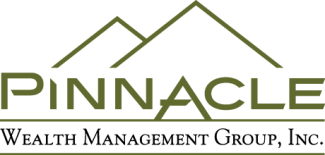
Retirement Planning for Small Businesses
Retirement Planning for Small Businesses
Retirement planning provides a safety net for the future and can be beneficial to both employers and employees. By exploring your options for retirement plans, you can find one that optimizes your small-business needs and provides the best savings for your business and your employees. Retirement plans for small businesses can come in the form of IRAs, defined benefit plans or defined contribution plans, and vary based on how much flexibility you want and how much you can afford to contribute to employee plans.
There are various retirement plan options available to you as a small business owner. These include:
- Payroll deduction IRAs
- SEP IRAs
- SIMPLE IRAs
- Traditional 401(k)s
- Safe harbor 401(k)s
- Automatic enrollment 401(k)s
- Roth plans
- Defined benefit (pension) plans
- Profit-sharing plans
- Payroll deduction IRAs
This type of IRA is the simplest for employers to implement, as it is largely under employee control. With a payroll deduction IRA, employees choose where to house the IRA and how to invest it, and only employees contribute to the account. It requires no plan documents and no employer contribution. Employees simply authorize a payroll deduction amount for the account, and automatic retirement savings is implemented. This type of retirement plan has a $5,500 annual contribution limit. This can be a good option for businesses that don’t have the funds to offer an employer match and don’t have the resources to deal with the documentation and administrative requirements necessary with defined compensation or benefit plans.
Simplified Employee Pension (SEP) IRAs
This type of IRA offers the opposite type of contribution from a payroll deduction IRA, as 100 percent of contributions are made by the employer instead of the employee. These contributions are immediately vested for the employee. The employer can decide on a year-to-year basis whether to contribute to SEP IRAs, but all employees must receive uniform benefits, for example, the same percentage of compensation. SEP IRAs have a limit of 25 percent of the employee’s compensation or $55,000 annually, whichever is less. SEP IRAs are a low maintenance way to set up retirement savings for your employees, and are ideal for an employer who can afford to contribute to his or her employees’ retirement savings but wants to do so without legal hassle. As an added bonus, employer contributions to employee’s retirement savings are deductible from the employer’s income for tax purposes.
Savings incentive match plan for employees (SIMPLE) IRAs
A SIMPLE IRA allows both employers and employees to contribute to retirement savings plans. Employees can contribute up to $12,500 per year, while employers must either match at least 3 percent of employee contributions or contribute 2 percent of employees’ salaries. This type of plan also allows for minimum administrative duties and allows employers and employees to share the responsibility of retirement contribution. With both SEP and SIMPLE IRAs, small employers can claim a tax credit for part of the necessary startup costs for these types of plans. The credit is equal to 50 percent of the cost necessary to set up and administer the plan, up to a maximum of $500 per year for each of the first three years.
All three of these IRA plan types allow employees to withdraw from their account at any time—however, if employees withdraw before age 59 ½, they will incur a penalty tax on these withdrawals.
Traditional 401(k)s
401(k)s fall into the category of defined contribution plans, meaning that they allow employees to save money in a tax-deferred account and withdraw this money at retirement for living expenses. While income is not taxed when it is put into a 401(k), this money will be taxed when it is withdrawn in retirement. Employees can contribute a set amount for retirement by deferring a portion of every paycheck and putting that money into a 401(k). However, it is usually more difficult to withdraw from a 401(k) than from an IRA before retirement, and some plans do not allow this. As with an IRA, any early withdrawal will be subject to a penalty tax.
A traditional 401(k) has a higher contribution limit than most IRAs—it allows for an $18,500 employee contribution per year. 401(k)s also offer the most flexibility for you as an employer, as it gives employers the choice to provide an employer match and vesting plan. For employees aged 50 or older, 401(k)s allow for an additional $6,000 per year “catch-up” contribution. While 401(k)s offer added flexibility and contribution options, they also require more documentation and administrative work for the employer. Employers are required to file an annual report showing the plan’s operations to the IRS as well as the U.S. Department of Labor and plan participants. For a very small business with few plan participants, the hassle involved with this type of retirement plan may outweigh the benefits.
Safe harbor 401(k)s
A variation of the traditional 401(k), safe harbor 401(k)s make employer contributions mandatory rather than optional. This encourages plan participation by employees and eliminates the need for nondiscrimination testing for employer contributions, as employers are required to contribute to all employee plans. The contribution limit for safe harbor 401(k)s is the same as for traditional 401(k)s—each employee may contribute up to $18,500 annually.
Automatic enrollment 401(k)s
Automatic enrollment 401(k)s are just what their name implies—401(k) plans that automatically enroll eligible employees in the plan. Employees are allowed to change the amount of their contributions or opt out of the plan altogether, but they will initially be automatically enrolled. As with safe harbor 401(k)s, this type of plan is also exempt from annual nondiscrimination tests, as it too requires employer contribution. When employees are automatically enrolled, their initial contribution must be at least 3 percent of their salary. This type of plan usually provides a high level of employee participation.
Roth plans
For both 401(k)s and IRAs, there is an additional option called a Roth plan that alters the way tax is applied to employees’ retirement funds. With a traditional 401(k) or IRA, money put away for retirement is tax-free when it goes into the account, but will incur taxes when it is withdrawn at retirement. A Roth plan taxes money when it is put into the account, but allows retirees to withdraw this money tax-free. This type of plan is usually used by employees who are in a lower tax bracket now than they expect to be at retirement. Roth plans give employers yet another option to contribute to employee retirement.
Defined benefit plans
Defined benefit plans differ from defined contribution plans because they are guaranteed to pay employees a specific amount of money when they become eligible for retirement benefits, whether they contribute to their retirement savings or not. This money is either paid out on a per month basis or in a lump sum, depending on the terms of the plan. These plans use a formula to determine how much employees will receive, based on criteria such as salary and how long they have worked for a certain company. The employer pays this cost, but there is a maximum annual benefit of either $220,000 or 100 percent of the employee’s final annual pay, whichever is less. These plans force a lot of employer contribution, but, similar to vesting, allow employers to protect themselves against a high turnover rate. Defined benefit plans are usually more complex than other types of plans and also cost more to establish, so small business owners with limited resources may want to consider a different type of retirement plan for their employees.
Profit-sharing plans
A profit-sharing plan is a plan that gives employees a share in the profits of the company, so the employees’ retirement earnings may fluctuate based on the company’s profitability. Additionally, employers have the option to contribute as much as they want each year, and can choose not to contribute to employee profit-sharing plans if it is a bad fiscal year for the company. The contribution limit for profit-sharing plans is either $55,000 annually per employee or 25 percent of employee’s compensation, whichever is less. The employer also must choose how to divide the contributions to participants’ accounts, as the money goes into a separate account for each employee. Many employers choose to divide this based on a percentage of each employee’s salary, but since contributions are discretionary, you may choose to distribute the funds as you want, as long as you have a set formula for determining how contributions are allocated. While this offers a great amount of flexibility, the administrative costs for profit-sharing plans can become quite high. Profit-sharing plans are also subject to an annual testing requirement that ensures benefits are being proportionally distributed among employees.
Choosing a plan
As a small business owner, you have many options when choosing retirement plans for your employees, so you can find a plan that is best suited to meet both your needs and the needs of your employees. By exploring all of your options and fitting them to the fiscal and operational structure of your company, you can decide how much you can and want to contribute to employee retirement plans and what type of plan can best handle these contributions.
To learn more, call our office or CLICK HERE to request a meeting today!
(734) 667-5581
Pinnacle Wealth Management Group, Inc.
www.pwmgi.com
849 Penniman Ave, Suite 201, Plymouth, MI 48170
Securities offered through Private Client Services, Member FINRA/SIPC. Advisory products and services offered through Pinnacle Wealth Management Group, Inc., a Registered Investment Advisor. Private Client Services and Pinnacle Wealth Management Group, Inc., are unaffiliated entities.
This article was written by Advicent Solutions, an entity unrelated to Pinnacle Wealth Management Group, Inc.. The information contained in this article is not intended to be tax, investment, or legal advice, and it may not be relied on for the purpose of avoiding any tax penalties. © 2013-2015 Advicent Solutions. All rights reserved.

